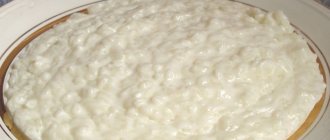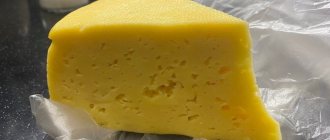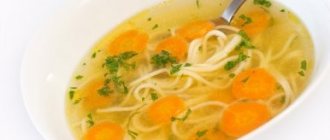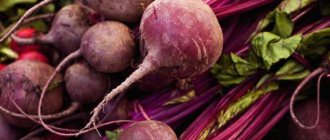With gastritis, the mucous surface of the stomach is inflamed. In this case, the digestive functions of the gastrointestinal tract are disrupted. Nutrients during gastritis are poorly absorbed, a general weakening of the body begins and, as a result, a series of endless infections.
Increased acidity, characteristic of one type of gastritis, can gradually destroy the walls of the stomach, leading to such serious consequences as stomach ulcers and cancer. It is very important to pay sufficient attention to the problem in the early stages, since chronic gastritis is difficult to treat, and restoration of the gastrointestinal tract in advanced cases will be lengthy.
Currently, gastritis is diagnosed in every second Russian. Children of primary school age and adolescents especially often suffer from this disease.
Diet for gastritis
Doctors say one of the main reasons for the development of gastritis is a poor, unbalanced diet. Exacerbations of the disease can be triggered by severe stress, alcohol consumption, and smoking.
An important component for successful treatment is diet. The choice of products and the method of preparing them depends on the type of disease.
It is determined by a qualified gastroenterologist based on the diagnosis.
There are two main types of gastritis:
- With high acidity. The function of the diet is to normalize gastric secretion, reducing the harmful effects. The diet is characterized by steamed or boiled dishes; dishes must be pureed.
- With low acidity. The diet is aimed at increasing acidity and activating gland secretion.
The main requirement for products for gastritis is easy digestibility, a reduced percentage of fat, a low amount of fiber, and a soft consistency. You should not overload your stomach with large portions, so it is recommended to have meals every 2-3 hours, and the meals should be satisfying. Cottage cheese meets all these requirements.
Salad recipes for gastrointestinal diseases
Salads, like any other dietary dish, need to be prepared right before consumption in order to preserve maximum nutrients. For a culinary dish, you can use vegetables, meat, and add a little cottage cheese.
It is very important to chop the ingredients, since large pieces can injure the gastric mucosa, and this will complicate the healing process.
Diet recipes will not cure gastritis or ulcers. Light meals only relieve symptoms and do not burden a sore stomach.
Safe vinaigrette
You can eat this salad even if you have a peptic ulcer.
To prepare, use a special dietary recipe:
- 2 potatoes;
- can of peas;
- 1 beet;
- 1 carrot;
- vegetable oil;
- greenery.
Step-by-step preparation:
- Peel and boil the potatoes, cut into cubes.
- Boil beets and carrots in salted water. Cut the beets into cubes and grate the carrots coarsely.
- Wash the greens thoroughly and chop finely.
- Combine all ingredients in a deep bowl, mix and season with vegetable oil.
Your diet will be perfectly complemented by this recipe. Vinaigrette can be eaten in addition to lunch, or as a separate dish during lunch.
Do not forget to properly chop all the salad components so as not to damage the gastric mucosa.
Olivie
Salads for gastritis can also contain fresh vegetables, but this dish is recommended for patients with low acidity. The familiar Olivier is prepared in a new way for patients with gastritis and ulcers.
Compound:
- 2 potatoes;
- 200 g chicken fillet;
- 2 eggs;
- 1 carrot and cucumber (fresh);
- 1 apple;
- 5 tbsp. l. low fat sour cream.
- canned peas;
According to recipes for dietary dishes for gastritis, Olivier is prepared as follows:
- Boil the poultry meat, cool and cut into small cubes.
- Repeat the same steps with potatoes and carrots.
- Boil the eggs, cool and chop finely.
- Peel the cucumber and apples and cut them into cubes.
- Mix all ingredients, add sour cream and a little salt.
Do not neglect the rules of heat treatment. Undercooked components will negatively affect the production of hydrochloric acid. When cooking vegetables, remove the skins from them to avoid complicating the digestion process.
Vitamin salad
Recipes for stomach ulcers will be complemented by a salad with the original name “Vitamin”.
To prepare it you will need:
- ½ beets;
- 1 apple and carrot;
- 3 tbsp. l. low-fat sour cream.
Preparation:
- Boil the beets in salted water, let them cool and grate them on a coarse grater.
- Boil the carrots until tender, grate coarsely.
- Peel and grate the apples.
- Mix the ingredients in a deep bowl, seasoning them with sour cream.
Additional components
For gastritis, salad recipes are quite varied. Among the components you can find:
- squid;
- green pea;
- low-fat cheese;
- mussels
Dietary salads are very common for stomach diseases, since there are no difficulties in their preparation, and the ingredients have a good effect on the functioning of the gastrointestinal tract.
As you can see, you can get rid of the symptoms of gastritis not only with the help of drug therapy, but also by following a special dietary menu. The patient's diet should consist of lean meats, processed vegetables and fruits, and dairy products. You can use recipes for dietary dishes for family celebrations, having carefully thought through their decoration. Do not violate the recommended rules and advice, because only then will you be able to defeat gastritis.
Useful properties of cottage cheese
Cottage cheese is a valuable fermented milk product and is recommended by doctors for inclusion in the diet for gastritis. After heat treatment, the beneficial properties of cottage cheese are preserved almost completely; curd protein is easily absorbed by the gastrointestinal tract. Cottage cheese is rich in protein and beneficial substances such as calcium, phosphorus, iron, fluorine, vitamins B, A, E, D and PP.
Cottage cheese is especially useful for gastritis with high acidity. Curd protein in combination with fats reduces the production of hydrochloric acid, which irritates the gastric mucosa. The cottage cheese should not be too sour. To do this, it is recommended to bake it.
Why is cottage cheese casserole an ideal dish for gastritis? It is light and very filling. There are many ways to prepare casserole; it is suitable for breakfast, lunch, dinner, and a light snack. Various ingredients allow you to create both savory and dessert dishes. At the same time, the stomach and other organs of the gastrointestinal tract will be reliably protected.
Option with carrots
The dish made according to this recipe has a delicate structure and a light, pleasant aroma. It is ideal for a morning meal and will saturate the body with all useful vitamins and minerals. This means that it can be included in the diet for gastritis. The casserole consists of inexpensive and easily digestible ingredients, which should include:
- 300 grams of cottage cheese.
- Egg.
- 100 grams of carrots.
- 100 milliliters of milk.
- 40 grams of sugar.
- 30 g semolina.
- 10 grams of butter.
- Vanillin.
Place peeled and grated carrots in a saucepan. Milk and butter are also added there. All this is simmered over low heat until the vegetable is soft, and then lightly mashed with a fork. The resulting carrot puree is combined with pureed cottage cheese, semolina, sugar, egg and vanillin. Mix everything well and transfer to a heat-resistant container. Cook the dish at standard temperature for half an hour.
How to cook a casserole correctly
- It is necessary to use low-fat cottage cheese whenever possible. Even better if it is a homemade product.
- The dough for casseroles must be kneaded very thoroughly so that there are no lumps in it. It is recommended to rub the cottage cheese through a fine sieve, and additionally puree the dough with an immersion blender.
- The baking time is long enough to allow the vegetables and fruits included to soften.
- Casseroles are served only when cooled. Excessively hot dishes are harmful to the stomach with gastritis. For better absorption, it is recommended to add low-fat sour cream or yogurt to the dish.
Recipes for making cottage cheese casseroles in the oven
Simple cottage cheese casserole
To prepare the curd dessert you will need:
- 450 g low-fat or homemade cottage cheese;
- 4 tbsp. granulated sugar;
- 3 tbsp. semolina;
- Vanillin on the tip of a knife;
- 3 eggs;
- 50 g sour cream;
- Breadcrumbs.
Preparation:
- Mix the pureed cottage cheese with granulated sugar, eggs, semolina and vanilla.
- Grease a baking dish with vegetable oil and lightly sprinkle breadcrumbs on the bottom.
- Carefully pour the curd mixture into the mold and level the surface, then pour in sour cream.
- Bake in an oven preheated to 180 degrees for about forty minutes.
- After cooling completely, serve, lightly brushing the surface with sour cream.
Fresh cottage cheese casseroles
There are recipes for unsweetened casseroles, where about 250 g of pre-boiled and chopped vegetables and a small amount of salt are added to the dough, mixed using traditional technology. If the kneaded dough becomes too soft, you need to add 1.5 tbsp. breadcrumbs.
As an addition to the curd mass, the following vegetables and herbs are allowed to be consumed:
- ¾ beets;
- ¾ spinach;
- ¾ carrots;
- ¾ zucchini;
- ¾ green peas;
- ¾ pumpkin;
- ¾ parsley, green onions and dill.
Cottage cheese casserole will become a full-fledged, hearty second course if, instead of vegetables, you add lean meat into the dough, grated through a meat grinder. An excellent option for lunch is cottage cheese casserole with the addition of meat, grated cheese and herbs.
It is noteworthy that instead of semolina, many nutrition experts advise using rice porridge. Rice-based dough helps envelop and protect the gastric walls, therefore, cottage cheese casserole with rice is acceptable for use with gastritis.
What other cooking methods are there?
Cottage cheese casserole can be prepared not only in the oven. Baking in the microwave is possible. In this case, cooking will take much less time. The main requirement is to use special glass containers with a lid to prevent the curd from drying out. If you don’t have such dishes, you can cover the mold with cling film, in which you need to make several holes with a toothpick. The average baking time is 8-12 minutes, but all ovens have different technical characteristics, so you should focus on the readiness of the casserole.
Products prohibited for consumption
- It is strictly forbidden to eat mushrooms and corn in any form.
- Sweets, such as chocolate and buns.
- Sauces and marinades, in particular hot spices.
- Legumes.
- Dairy products containing a high percentage of fat, such as very heavy cream.
- Cold food. For example, different types of ice cream and drinks.
- Very fatty meats and fish.
- Vegetables that have a spicy or sour taste. For example, radishes, sorrel, white cabbage and parsley. These foods cause the gastrointestinal tract to produce more gases in the intestines.
- Various soups cooked in a strong broth.
| Allowed | Forbidden |
| Snacks (liver pate, boiled tongue, etc.) | Soups cooked in steep broth |
| Sweet fruits, berries | Cold food |
| Cereals and porridges (rolled oats, rice, oatmeal) | Fatty dairy products |
| Drinks (cocoa, coffee with milk, tea with milk, weak tea) | Sweets (chocolate, buns) |
| Eggs (soft-boiled or scrambled) | Mushrooms and corn |
| Lean meat | Legumes |
| Soup (vegetable broth or milk) | Very fatty meats |
| Flour products (only premium or 1st grade flour) Spices and sauces that are not hot and sour (fruit, milky-fruit) Low-fat dairy products | Hot and sour spices (and sauces). You should also not eat sour vegetables. |
Recommended video:
Contraindications
For gastritis, dishes prepared from foods that should be excluded from the diet are contraindicated. For example, you should not use fatty meat, smoked meats, or sharp cheese.
Be careful with seasonings; hot spices, mustard, and vinegar should not be used. In addition, you need to take into account the individual characteristics of the body; if you are intolerant to any product, you must exclude it from the diet.
So, casseroles can and should be prepared for gastritis. Steamed dishes will be especially useful. When baking in the oven, it is important to prevent the formation of a crispy crust on top, so it is better to cover the pan with foil. Casseroles are prepared according to different recipes, the main thing is not to use products that should be excluded from the menu.
Cottage cheese is a very tasty and healthy fermented milk product. It contains a sufficient amount of vitamins, lactobacilli, enzymes, calcium and magnesium salts. In addition, it is rich in easily digestible protein, which has a beneficial effect on the functioning of the digestive system. That is why you should have no doubt whether you can have a casserole made with cottage cheese if you have gastritis. In today's publication you will find several simple recipes for this dietary dish.
Examples of menus for ulcer sufferers
Dried fruits are recommended for ulcer sufferers
At the first moment after diagnosis, it can be difficult for the patient’s relatives to figure out what to prepare from the approved products. Approximate menu for several days:
- Breakfast - steamed omelet, yogurt or semolina pudding and chamomile infusion.
- Second breakfast – soft-boiled egg, jelly or curd paste.
- Lunch – vegetable soup, steamed meatballs or cereal soup, stewed grated carrots. Drinks include weak tea, raspberry or chamomile infusion.
- Afternoon snack – jelly or yesterday’s bun, milk or cottage cheese casserole, fruit puree.
- Dinner - baked potatoes, boiled fish or vegetable stew and boiled beef, or mashed potatoes, boiled chicken.
During an exacerbation, during the rehabilitation period, new products are introduced gradually and only with the permission of the attending physician. With complete recovery in the fall and spring - a period of exacerbation of chronic diseases - it is recommended to carefully monitor the diet and it is advisable to switch to diet No. 1 to prevent relapse of the disease.
Sample diet for a week
| Breakfast | Semolina pudding, slightly diluted juice, wheat bread made from premium (or 1st grade) flour with the addition of mild cheese Doctor's sausage sandwich, marshmallows, tea Light salad of sweet fruits, black tea with natural honey |
| Lunch | Baked apple with honey, black tea Milk porridge, weak coffee with milk |
| Dinner | Cauliflower puree, beef cutlets (low fat) Milk noodle soup, vegetable salad and milk tea Rice porridge with boiled fish. Black or green tea with natural honey |
| Afternoon snack | Oatmeal with milk and fruit jelly |
| Dinner | A glass of compote, baked fish and noodle soup (cooked in chicken broth) |
| Before bedtime | A glass of low-fat kefir |
General principles of nutrition for ulcers
Diet for ulcers
The diet during an exacerbation of an ulcer, during periods of remission, should pursue 2 goals - to provide the patient with necessary nutrients and to help improve health and reduce relapses of the disease.
General principles of diet planning:
- Calorie content - the recommended daily intake should be maintained. A lack of nutrients, as well as an excess of them, will cause more harm than good. An episode of ulcers should not be used as a forced diet.
- Eat every 3 hours and stay hydrated.
- Recommended serving: the dish should fit in 2 palms.
- No fried crusts, foods that provoke flatulence. Only gentle food.
- A minimum of salt, or better yet a complete rejection of this spice.
- Alcohol is strictly prohibited.
- Heat treatment of products - stewing, baking, boiling.
- Food should be warm, not hot or cold.
During the recovery phase, some forbidden food is occasionally allowed. But in small quantities.
Individuality – each patient’s diet should be discussed with a doctor. The choice of diet is influenced by age, weight, location of ulceration, and prognosis for recovery.
The duration of therapeutic nutrition is at least 1 year after the initial episode of the disease. In chronic cases and partial relapses, diet should become a way of life.
Criterias of choice
Homemade cottage cheese
The best option is to use homemade natural cottage cheese, prepared with your own hands. To do this, take whole cow's or goat's milk, boil it and add rennet, which can be bought at any pharmacy. After a day, the milk turns into an elastic white mass, from which the whey easily comes off. They put it on the fire and, without bringing it to a boil, throw it into a colander with a fine mesh. Allow the cottage cheese to completely drain and cool for another 5-6 hours, after which the product is completely ready for use.
If this option is too labor-intensive and not suitable, you can always use a purchased analogue. The problem is that store-bought cottage cheese may contain additional components that affect its taste and nutritional qualities.
When purchasing cottage cheese for ulcers, you must pay attention to the following indicators:
- The presence of whole milk and dry ingredients - absolutely natural cottage cheese is prepared only from whole milk, but not from dry powder mixtures.
- Shelf life - if a fermented milk product is good for more than 4 days, then its quality is in question. Plus, such cottage cheese will definitely contain preservatives that will not allow it to sour and spoil prematurely.
- Fat content – for ulcers, the permissible fat content is no more than 15%.
- Organoleptic characteristics – the smell is slightly sour, the consistency is homogeneous, without grains.
It is advisable to avoid purchasing curd mass, which contains various dyes, sweeteners, flavors and stabilizers.
If preference is given to the dairy pavilion at the market, then it is important to taste the product. Too sour cottage cheese with grains, which has a rich white color, can provoke the development of intestinal poisoning. Moreover, for the buyer it will forever remain a mystery how and under what conditions the fermented milk product was prepared and whether basic hygiene rules were observed.
Principles of consuming cottage cheese products depending on the type of disease
Cottage cheese contains lactic acid bacteria, which stimulate an increase in acidity. This can negatively affect the condition of the mucous membrane, causing pain, heartburn and discomfort. Therefore, with high and low acidity, the methods of consuming cottage cheese are different.
Cottage cheese with low acidity
When there is an enzymatic deficiency, in which food products are not fully broken down, natural cottage cheese is the best remedy. It is consumed fresh, adding a small amount of low-fat, non-acidic sour cream, sugar or fruit.
Cottage cheese dishes are recommended for breakfast and as an afternoon snack. Wash it down with warm tea with sugar or honey to stimulate the stomach.
It is not recommended to add sour berries: cranberries, raspberries, strawberries. They will increase acidity several times and can cause unpleasant symptoms. Banana, peach, mango, apricot, and plum go well with cottage cheese.
Cottage cheese for high acidity
If the acidity is already high, and cottage cheese can increase it several times more, the product should not be consumed fresh, but after heat treatment. Sweeteners must be added to it. Such dishes are good for dinner or an afternoon snack, they are quickly digested and do not cause heaviness.
It is better not to consume ready-made cottage cheese casseroles, puddings and cottage cheese soufflés due to the presence of preservatives and artificial sweeteners. Particular attention is paid to glazed cheese curds, which have nothing in common with natural cottage cheese and do not provide any benefit.
Features of pathology and the influence of fermented milk products
A stomach ulcer is a bacterial infection of the mucous membrane, which leads to the formation of erosions. Accompanied by bleeding and acute pain. Leads to disruption of the digestive system. Often causes nausea and vomiting, lack of appetite and increased discomfort after eating.
Fermented milk products are extremely important for the patient’s health, as they contain large amounts of protein and calcium. These two substances take part in the metabolic processes of muscle and bone tissue, and deficiency is accompanied by the development of pathologies.
Unlike meat products, cottage cheese contains easily digestible protein. To digest it, there is no need to synthesize a large number of enzymes. Nutrients are absorbed faster and maintain balance in the body.
If you have a peptic ulcer, it is important that the body does not experience an acute protein deficiency. And if discomfort may develop after eating low-fat meat dishes, such manifestations are not observed after cottage cheese.
In addition to fresh fermented milk products, you can prepare various dishes, casseroles, dumplings, pancakes, which allow a person to receive all the benefits from the product and not aggravate the course of a peptic ulcer.
Cottage cheese is always present in the diet of ulcer sufferers, but doctors do not always allow it to be eaten fresh. There are some features that should be taken into account when choosing, based on the level of acidity of the stomach.
Why is cottage cheese so valuable?
Curd mass is made from milk by releasing whey from it. The finished product contains a large number of proteins and microorganisms that help maintain a healthy gastrointestinal tract.
Due to the fact that you can find a product of varying fat content on the shelves, you can use it in your diet during weight loss. For patients with gastritis, it is better to choose a lower fat content, for example, 1.5%. For an adult, 2-3 servings of cottage cheese per week will only bring benefits .
Is cottage cheese compatible with acute gastritis?
The course of the acute form of the disease occurs in conjunction with severe pain, vomiting, and stool disturbances. It often happens that the course of the disease is complicated by gastric bleeding and a violation of the integrity of the organ mucosa. In such circumstances, nutrition is completely excluded until the condition normalizes, then nutrition becomes as gentle as possible, similar to the nutrition of a baby.
Accordingly, cottage cheese is completely excluded for acute gastritis. However, after an illness, during the period of adaptation to everyday nutrition, a gradual introduction of cottage cheese is possible (it is better to cook it yourself). The doctor may allow you to prepare steamed curd casseroles, baby curds (marked “for baby food”), and fruit purees with cottage cheese for feeding infants.
In order not to harm a weakened stomach, it is better to carefully grind the cottage cheese through a sieve or beat it with a blender until it becomes paste-like, adding milk or permitted fruit. Large grains of cottage cheese can harm the mucous membrane of a stomach that is not yet fully strengthened after a serious illness.
After health improves, the product is introduced into the patient’s diet more boldly. In cases of gastritis, cottage cheese is added to salads, steamed cutlets, and whipped with cheese and herbs for sandwiches. It is good to add curd grains to porridge for breakfast.
Second courses
Pilaf recipe for gastritis
Meals for gastritis should be regular and frequent, containing healthy proteins, vitamins and minerals. It is allowed to eat meat, vegetables and fruits after heat treatment, and dried bread. You can cook pilaf for gastritis, you even need to. The recipe for the dish does not provide for large quantities of spices, but it does contain meat that will saturate the body with proteins.
Ingredients:
- 500 g chicken fillet;
- 1 tbsp. meat or vegetable broth;
- 200 g rice;
- 300 g of any permitted vegetables.
Cooking diagram:
- Wash the chicken meat, dry it and chop it into small cubes. Place the mixture in a hot frying pan with butter and simmer for 5 minutes.
- As soon as the meat is cooked, add rice to it, pouring the prepared broth over the mixture. Simmer everything covered over medium heat for 20 minutes.
- You can use zucchini and carrots as a vegetable additive. Puree the selected vegetable and add to the mixture from step 2.
- Simmer the pilaf for 20-30 minutes.
Nutritious pilaf can be included in the diet as the main course of an evening meal, or as an addition to lunch. The main secret of dietary food is no spices or fatty meat.
This dish will be especially useful for duodenal ulcers and gastritis.
Cutlets for gastrointestinal diseases
With gastritis and pancreatitis, you can eat cutlets, however, only in the remission stage. To prepare them, choose lean meats - turkey, rabbit, chicken. You can add some spices, salt, and black pepper to the recipe. This dish is prepared exclusively by steaming, since fried cutlets will only harm the sore epigastrium.
A dietary recipe for chicken cutlets includes the following components:
- 1 kg. minced meat;
- 1 egg;
- 2 slices of loaf;
- milk;
- carrots, greens.
The meatballs are prepared like this:
- Dip the loaf pieces in milk and add to the minced meat.
- Add finely chopped greens to the same mixture, grate the carrots, and break the egg.
- Mix the meat mixture with your hands and start forming future cutlets.
- Roll the minced meat into a small ball and place it in a steamer. Repeat the steps.
Once cooked, place the cutlets on a plate. Wait until they cool down and you can serve them.
Meat dishes saturate the body with the necessary proteins and do not injure the mucous membrane.
Steam cutlets
An inflamed pancreas can be pampered with steamed cutlets with the addition of white cabbage.
The recipe is extremely simple:
- 1 kg. minced chicken;
- 1 egg;
- 2 onions;
- 100 g cabbage;
- garlic;
- salt and black pepper on the tip of a knife.
The technology for preparing the dish is the same as described above. The only thing is that the cooking time in the double boiler needs to be increased due to the vegetable component.











